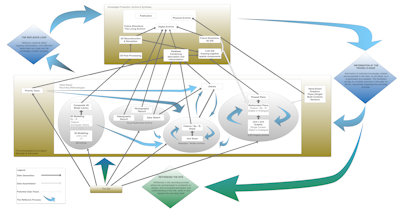
The reflexive methodologies developed and adopted at Çatalhöyük are the practical implementation of post-processual archaeology, pioneered by Hodder and other scholars in the 1980s (Hodder 1982; Hodder 1986). This approach has been operationalized and applied to the excavation and recording methods employed on site with varying levels of success through time (see Hodder 1997; Hodder 1999, 2000b, 2003; Berggren and Nilson 2014; Farid 2014). However, within the context of the adoption of new computing methods on-site at Çatalhöyük, the concept of reflexivity as it is practised on the site warrants some new consideration (see also Berggren et al. 2015). Even though various types of the reflexive approach have been defined across various disciplines (see Lynch 2000), their implementation within the ÇRP has always focused upon their effect upon the on-going interpretation of the site at every level from 'the trowel's edge' (Hodder 2000a, 3–4) to synthetic debates. At Çatalhöyük the reflexive process actually forms a sort of recursive feedback loop, or hermeneutic circle (Hodder 1991). Figure 1 emphasises the circular and complex nature of this knowledge production in archaeology.

An important aspect of the reflexive method has been the integration of new technologies and their critical use from the start to make reflexivity, contextuality, interactivity and multivocality possible (Hodder 1997, 694). To that end, the groundwork for the introduction of these technologies has been the creation of a central IT infrastructure with an integrated relational database; this was first developed by Tim Ritchey and Anja Wolle at the start of the excavations at Çatalhöyük. The further development of this system by later team members such as Mia Ridge, Richard May, Sarah Jones and Claudia Engel has made it possible in the last few years for all data to be constantly accessible for the researchers, at least in the dig-house. However, with digital methods embedded in the project since the beginning, reflexive methodology forms an additional layer of contextual information on top of the intensive recording of on-site data. During the input of new data into a specific database section, such as a unit description, feature discussion or finds' classification, it is always possible to include reflexive information relating to the underlying observational data. Diary entries allow further contextualization of the interpretations, in this way integrating the entire reflexive methodology of ÇRP into the data processing. As such, the ÇRP has been able to continuously incorporate new methods by adding them to a canon of applied methods, constantly integrating them and making their results accessible to the entire project.
A key practice embedded within the ÇRP has always been consideration of the role of these digital technologies within, or alongside, the existing methodologies, as well as careful exploration of what 'value' they add to the archaeological process – in particular to recording and interpretation ('knowledge creation'). While the integration of tablets into the IT infrastructure can be viewed as a logical step for the Çatalhöyük Research Project, we still need to understand in what way, and to what extent, these technologies can contribute to the requirements of the reflexive method itself. We argue here that digital methods, and particularly the use of tablets on site, allow for the addition of different layers of contextual information to the intensive recording of on-site data, enhancing ÇRP's reflexive methodology.
Internet Archaeology is an open access journal based in the Department of Archaeology, University of York. Except where otherwise noted, content from this work may be used under the terms of the Creative Commons Attribution 3.0 (CC BY) Unported licence, which permits unrestricted use, distribution, and reproduction in any medium, provided that attribution to the author(s), the title of the work, the Internet Archaeology journal and the relevant URL/DOI are given.
Terms and Conditions | Legal Statements | Privacy Policy | Cookies Policy | Citing Internet Archaeology
Internet Archaeology content is preserved for the long term with the Archaeology Data Service. Help sustain and support open access publication by donating to our Open Access Archaeology Fund.